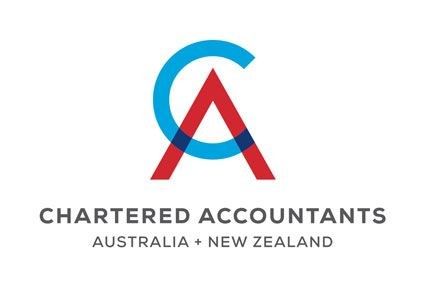
Business stimulus Covid 19
Jobkeeper Payment
Whilst still pending legislation and therefore many questions still unanswered this is what we know of the Jobkeeper payment.
Eligible employers, will receive a flat $1,500 per fortnight payment for every eligible employee they pay for a 6 month period from 30 March 2020.
Eligible employers;
their business has a turnover of less than $1 billion and their turnover will be reduced by more than 30 per cent relative to a comparable period a year ago (of at least a month); or
their business has a turnover of $1 billion or more and their turnover will be reduced by more than 50 per cent relative to a comparable period a year ago (of at least a month); and
the business is not subject to the Major Bank Levy.
The employer must have been paying eligible employees as at 1 March 2020
Important to note, Not For Profits & Sole Traders businesses that are employing eligible employees are also able to access the jobkeeper payments.
Eligible employees;
are currently employed by the eligible employer (including those stood down or re-hired);
were employed by the employer at 1 March 2020;
are full-time, part-time, or long-term casuals (a casual employed on a regular basis for longer than 12 months as at 1 March 2020);
are at least 16 years of age;
are an Australian citizen, the holder of a permanent visa, a Protected Special Category Visa Holder, a non-protected Special Category Visa Holder who has been residing continually in Australia for 10 years or more, or a Special Category (Subclass 444) Visa Holder; and
are not in receipt of a JobKeeper Payment from another employer.
Important to note. The jobkeeper payments will be reportable to Services Australia and might impact access to other payments.
Interest can be registered here and eligible employers will be able to then apply for the scheme online. Payments expected to be made in the first week of May.
Business who don't have employees (i.e. sole traders)
Don't lose hope - it is suggested that you can still apply for this by nominating an individual (presumably the sole trader) and provide a declaration as to recent business activity.
A monthly update will need to be provided to the ATO to declare their continued eligibility for the payments.
What if the employee earns less than $1,500 per fortnight?
You will still get the full $1,500 amount and are required to pass it on (after withholding PAYGW) to the employee.
Superannuation will only be payable on an employees standard wage if the jobkeeper amount results in them receiving a higher amount.
Boosting Cashflow for Employers
For those of you with employees you will be entitled to a rebate equal to 100% of your PAYG Withholding from 1st January to 30 June 2020, up to a maximum of $50,000. (This has increased from 50% of the withholding and a maximum of $25,000. If you employ someone and you don't have to withhold tax on their wages you will still receive $10,000. If you withhold $10,000 a month from your employees wages in PAYG you will receive a $10,000 rebate each month, until you reach the $50,000 threshold. This will be paid to you once the March BAS and June BAS have been lodged. For those of you who pay PAYG Withholding monthly the ATO will give you 3 times the March Withholding amount to ensure you are on a level playing field, then the rest in each BAS to the end of June. On top of this an extension has also been applied from 1st July to 31st October. This extension means you will receive the same rebate again as you received between January - June. That means an additional $10,000 as a minimum up to $50,000 depending on how much you were eligible for previously. Whilst this takes the total payment to a minimum of $20,000 and maximum of $100,000 it's important to note the DATES. This won't all be paid between the March and June BAS, but will instead be paid between March - September. If you are unsure how much PAYG Withholding you normally pay, jump into Payroll in Xero, go to pay employees and look at the tax column. It's important to note that the payment will not be made until after your BAS has been lodged and will only be made to you if your ATO account is in Credit. If you owe the ATO money this will come off your existing debt. You don't need to 'register' for this, it will automatically happen as part of your BAS.
Supporting Apprentices
In an effort to keep apprentices and trainees employed, employers will be entitled to 50% of the wages of apprentices and trainees from the 1st January to 30th September. This will be capped at $21,000 or $7,000 per Quarter per eligible apprentice. This will be available to small business employers who have less than 20 employees in total. It's important to note that if you employ a new apprentice that was displaced from another employer you will be eligible for the rebate. Eligibility assessments will need to be done by an Australian Apprenticeship Support Network Provider.
To encourage investment
The government have introduced another increase to the asset write off threshold and additional accelerated depreciation. These are not cash back incentives, but an acceleration of a tax deduction, reducing the income tax your business would pay at the end of the year. If your business is making a loss these measures won't give any immediate assistance from a tax or cashflow perspective.
Instant Asset Write Off
Whenever you purchase an asset for your business (a car, computer, machinery etc) you generally need to depreciate or claim the cost of this asset over a number of years in your tax returns. In the last budget the government increased this threshold meaning anything costing less than $30k could be claimed as a tax deduction immediately rather than needing to be claimed over a number of years. As part of these measures the government has increased this threshold to $150k for all businesses with a turnover up to $500m. That means if you purchase an assets from now until 30 June that costs less than $150k you will be able to claim it as a tax deduction this year. What this means is that if you purchase a piece of machinery for $100k, you will reduce your income tax bill by $27,500. Remember you need to a) be making a profit and have to pay tax in order for this to apply, and b) have the cashflow in your business to support and sustain the purchase.
Payroll Tax Relief
No Payroll Tax to be paid for March, April or May for the NSW state.
When your annual reconciliation is lodged in July you will get an exemption of 25% of your total payroll liability for the year (note this includes the wages you paid in March - June)
Banks
Most banks have hardship assistance programs in place to help those in need. They can be found on their websites. Specifically relating to COVID-19 the following has been announced.
The Australia Banking Association is a great resource to understand what you bank is offering - check their info our here.
CBA - check more info our here
ANZ - check more info our here
NAB - check more info out here
Westpac - check more info our here
Bendigo - check more info out here


